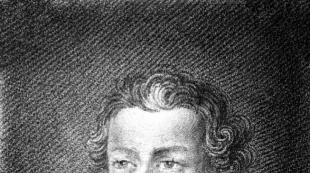Strengthening of royal power in 16 17. Strengthening of royal power in France at the beginning of the XIV century. Restriction of the role of estate representation bodies
In the first half of the XVI century. in Europe, the formation of centralized states - France, England, Spain - is being completed. In these countries, a new form of political structure is being formed - absolutism. Its characteristic features were: the unlimited power of the sovereign, who refused to convene class-representative institutions and relied on an extensive bureaucracy and a powerful army. The church is fully integrated into the state system. The theory of the divine nature of royal power acted as an ideological justification for absolutism. Under the influence of various factors at the turn of the 15th-16th centuries, the traditional estates deformed, becoming more interested in strengthening royal power. The nobility saw in her a source of financial support, and also sought to obtain court positions, posts in the army and government. The ongoing reformation significantly weakened the position of the clergy, which was losing its former autonomy from the secular authorities. The third estate, especially the entrepreneurial elements, traditionally supported strong royal power, seeing it as a guarantee of their stability and prosperity. Using the interest of a number of estates, the monarchy manages to rise to the position of "above-class" power and win absolute power. Under such conditions, the personality of the monarch, his abilities and inclinations acquired great importance. The basis of the political strategy of the heads of the absolutist states was the maneuvering between the old nobility, which retained significant political weight, and the bourgeois elements, who had large financial resources. Under absolutism, a new principle of government is established: the state is no longer regarded as the feudal patrimony of the king, the government of the country acquires a public law, nationwide character. The emergence of absolutism was an important step in the development of an institutionally more perfect, sovereign state.
Absolutism was formed in the 16th-17th centuries, first of all, in such countries as France, England, Spain, which sought to establish their hegemony in Europe. However, in Europe at this stage of development, there was also the so-called "regional" model of absolutism (typical of the Italian and German lands with their polycentrism). Here, although within the framework of small states, there was also a process of strengthening the monarchical power, the formation of a bureaucratic apparatus and a regular army. Of course, the formation of absolutism did not always go smoothly: provincial separatism, the centrifugal aspirations of the big aristocracy, remained; continuous wars hampered state development. Nevertheless, Spain under Philip II, England under Elizabeth I, France under Louis XIV reach the peak of the development of the absolutist system. I hope it helped
Lesson Objectives:
1. Find out what "absolutism" is?2. Find out what are the characteristic
traits of absolutism.
3. What are its manifestations in European
countries?
Comment out the expression:
"God's will isso that everyone who is born
subjects obeyed without
reasoning"
Dictionary:
Absolutism is a formgovernment under which
sovereignty
unlimited
belongs to one person
- to the monarch.
1. Absolutism
"Born to be a subjectmust obey" meaning
absolutism.
Absolutism developed into
late 15th-16th centuries
Creation of a nationwide apparatus
management, permanent professional
army, state tax system,
unified state legislation and
administrative unit, unified
state economic policy, etc.
2. One king - one country
WHAT DOES THIS STATEMENT MEAN?2. One king - one country
To prevent the start of new feudalstrife among the old recalcitrant and wayward nobility
lands were taken away, castles were destroyed,
bands of feudal lords. Restrictions on freedoms affected
and cities that defended their ancient rights.
After the end of the Hundred Years War in France,
liquidated the old rights of the provinces (Normandy,
Burgundy, etc.), they lost their independence
and came under the authority of the king.
In England, the king subjugated distant
northern counties and Wales (Council of the North established
and Council of Wales).
2. One king - one country
During the period of absolutism, organsclass representation
(English Parliament,
States General) lose
its meaning. Kings aspire
get rid of their influence.
(dukes, earls, barons,
marquises, baronets) in every possible way
resist these efforts.
The main features of absolutism:
- Under absolutism continuesannexation of outlying territories,
the attempts of the old feudal
authorities to maintain their independence How could my ancestors let this happen...
In England to the Tudors
had to reckon with
parliament. According to
English customs
kings had no right
collect taxes without them
permissions. Tudors
preferred
cooperate with
parliament, not
fight
Henry VIII Tudor (1509-1547)
Elizabeth I Tudor - Queen of England (1558-1603)
During the period of absolutism, the organs of the class
representations (English Parliament,
Spanish Cortes, French
States General) are losing their
meaning. Kings seek to get rid of
from their influence.
During the 37 years of the reign of Henry VIII
parliament met only 21 times, and
for 45 years of his daughter's reign
Elizabeth - 13 times. Kings couldn't
get rid of parliament altogether,
but significantly limited
influence, thereby strengthening its
absolute power. "Born subjects must obey"
I don't understand how my
ancestors could
allow this
institution...
I have to put up with
what I can't
get rid of...
James I Stuart King of England and Scotland (1603-1625)
3. Limitation of the role of estate representation bodies
Assumed the English throneafter Elizabeth James I Stuart
(1603-1625) throughout his
board fought with Parliament,
limiting his role in every possible way.
James I Stuart
James I believed that parliament harms
matters of state administration.
In his speech to
parliament in 1604, the king declared
that he is sovereign
the master of the whole country: "I am the head,
and the island is my body, I am the shepherd,
and the island is my herd.”
3. Limitation of the role of estate representation bodies
Francis I of ValoisFrance has an absolute monarchy
began to take shape in the 16th century.
King Francis I of Valois (1515-1547)
single-handedly accepted all the most important
decisions, in his decrees he wrote:
"Because we like it." General
states in France
not
turned into permanent
acting body, but were going to
only in case of big
necessary by the king. FROM
1614 to 1789 States General not
never gathered.
Louis XIV - French "Sun King" (1643-1715)
In the process of folding absolutism occurs:Subordination of the feudal nobility to the king.
Representative bodies lose
its meaning.
idea of divine origin
royal power.
Creation of nation states.
4. Centralization of the state
FrenchEstates General
in 1614
In England central
administrative and
executive body was
Privy Council, whose members
appointed by the king.
In France under the king
there was a council
considered by the government
but its members also
appointed by the king and
carried out his will. Members
this government were
blood princes, tall
spiritual ranks, financiers,
lawyers, but the country had
personal rule of the king. Unified system of state administration
England
Central
administrative
and executive
body
became the Privy Council,
whose members
appointed by the monarch
France
head of state
- king.
He had advice
but the monarch
appointed him
members
and alone
accepted
solutions.
4. Centralization of the state
English lawyer of the 16th century.In England most
court cases were handled by two
royal courts.
For justice and rebellious
the nobility observed the Star
ward. In places
there were elective
justices of the peace (from the old
aristocracy and new
nobility), but they
elected under control
government and secret
advice.
4. Centralization of the state
Louis XIVIn France, the restriction
royalty
were the highest judicial
authorities in the provinces
parliaments. They could
appeal judicial
and government
solutions. Kings is sharp
clashed
with parliaments.
King Louis XIV in dispute
with the Parlement of Paris
stated:
"The state is me!" Unified judiciary
England
France
star chamber
Parliaments
judges
1.
2.
3.
4.
5.
6.
world
judges
Conduct litigation;
Expose conspiracies;
Suppress rebellions;
Chase vagrants;
Collect taxes;
Collecting money for the poor.
1. Right to appeal
judicial and
government
solutions;
2. Appointment of a regent;
3. Consideration of contracts,
decrees.
4. Centralization of the state
Government of the country andEngland and France
carried out by officials.
Official positions
transmitted over
inheritance, bought.
Personal merit is not
played a role - it was important
the availability of money. Majority
did not receive officials
government fees,
but lived at the expense of the population
(gifts, offerings,
bribes).
2. Monarchy and nobility
In emergingcentralized states
this principle does not suit
monarchs. They aspire to
complete subjugation of all
estates of society.
Old aristocracy - feudal lords
(dukes, earls, barons,
marquises, baronets) in every possible way
resist these efforts.
To this end, the feudal lords are gradually deprived of their
privileges and influence. Kings take service
nobles (a new estate whose position
depends entirely on his service to the king) Local government
England
France
officials
1000-1500
8000
Livelihood?
Salary + payment of the population for
services "The Monarch is God's Anointed One"
Read material on
pp. 32 – 33 and answer
to questions:
* Under which monarch
absolutism reached
the highest flourishing?
What did it show
sovereignty
king?
3. Absolutism
Monarchs strive for maximumpossible centralization of control,
concentration of all levers of power in
their hands - ABSOLUTE MONARCHY. Creation of a professional army
England
(absence
regular army)
1. People's militia.
2. Detachments of volunteer volunteers.
France
(permanent mercenary army)
taxes
straight
tax on
land and
property
indirect
tax on
salt Common economic policy
Mercantilism
Protectionism
Policy directed
to the predominance
export of goods
over import
Support
government
industry,
protection of the internal
market from
foreign
intervention
Common economic policy
Mercantilism is an economicpolicy based on
the idea of the predominance of the export of goods over
importation for the purpose of accumulating gold. Who owns the words?
“I don’t understand how my ancestors could allow such an institution.
I have to put up with what I can't get rid of."
“In my person, God sent down a blessing on you. I am a husband, and all
the island is my lawful wife. I am the head and the island is my body. I
shepherd, and the island is my flock.” (from a speech at the first parliament).
"Such is my good will, for so we desire"
“Did you think, gentlemen, that the state is you?
You are wrong. The state is me! Summing up the lesson
Section 32
Questions on page 35
Know the terms
Features of the fief system, due to the conquest of the military-political dominance of the central government, determined the formation of new powers of the crown, significant strengthening the state position of royal power.
In addition to the powers transferred from the Anglo-Saxon ancient monarchy to land grants (now free from the consent of the Hutans) and to legislation, the Norman kings during the 11th - 12th centuries. secured significant new rights. The king became the bearer of the highest military power: the fief militia-militia was in the position of the king's squad, he single-handedly determined the time of convocation and the number of militias; in this respect also the ancient rights of the Anglo-Saxon kings as a military leader were revived on a new basis. The judicial supremacy of the king was established - not only in the form of rights to his own royal court, but also to determine all the judges in the kingdom in general, to review the decisions of lower courts, even those related to communal traditions. The administrative and police supremacy of the crown became especially significant: the authorities conducted mandatory censuses and audits of the lands and population, prohibited or restricted the movement of the population for these purposes, offenders were taken on bail on behalf of the crown, which freed them temporarily or permanently from liability, the representatives of the king began to take mandatory participation in the investigation of crimes on the ground, and from the XIII century. there were commissions of inquiry under the authority of the vice-count (a commissioner appointed by the king). The financial rights of the crown appeared already as an organizer of state taxation: the Normans introduced direct taxes, the king had the right to special fees from his vassals, the right to redemption from military service, to customs fees; additional income to the crown was provided by income from royal domains and from nationwide forests (this was also recognized as a royal prerogative), from minting coins. Finally, there was dominance over the church (in place of the former patronage of the Anglo-Saxon times): the kings approved church decrees, the land ownership of the church was transferred only as royal grants, from which the clergy were obliged to carry out military service and other duties.
Under the first Norman kings revived feudal assemblies(gatherings of Whitans), however, they became irregular and more numerous (at one of the meetings of the 11th century, all the landowners of England were present - up to 60 thousand people), their significance for the authorities was small. played an incomparably greater role royal court(curia regis). Here was the true center of the military, judicial, police, financial and ecclesiastical supremacy in the country, despite the fact that its institutionalization was still weak. The court also existed as a collection of vassals close to the king, as court congresses (it was believed that the laws of the country could change only with the consent of the representatives of the country); from the 12th century The General Council of the King, consisting of 20-36 of his closest servants and stewards, operates non-periodically. Courtyard by the middle of the 12th century. became the central administrative body of the country. The only stable institution in its composition so far was only the treasury of two departments: Accounts and Reception. The Treasury was located in a special hall of the Palace of Westminster. It was headed by a permanent treasurer who had professional officials at his disposal. At the court there were special judicial commissions, where royal justice was administered. Finally, from instructions to the persons of the royal court, special management functions gradually began to take shape - both palace and national. Among such persons, the first place belonged to the governor-general, or justiciar of all England. The affairs of the court were in charge of the seneschal and the mayor, and other court ranks and ranks arose. The Lord 1st Chamberlain ruled the royal household. The command of the permanent part of the army was given to the constable; in addition, there was also the title of Marshal of England. Diplomatic and special administrative affairs were led by the chancellor, usually from among the clergy. Other officials or institutions periodically arose and disappeared (for example, the Chamber of the "chessboard" in the 12th century to collect revenues), whose administrative powers also stemmed mainly from the domain rights of the king. Many offices and institutions traced their origins to the Frankish monarchy and the Duchy of Normandy. Local government was also subordinated to the central government. The position of ealdorman (earl) turned into a supreme governorship or military rank. The main burden of local government (in the counties) passed to the vice-count, or sheriff; he was both the military manager of the king, and the chairman of the local justice, and the police officer, and the manager of the domain possessions.
Reforms of Henry II.
The growth of the importance of royal power, and at the same time a centralized state court and administration, was facilitated by the transformations undertaken during the reign of the king Henry II (1154 - 1189). A whole series of reforms gave the fief monarchy a special look, different from similar institutions in continental Europe.
At the beginning of his reign, Henry II, relying on the support of cities, petty knights and free holders, suppressed numerous civil strife among the magnates; many detachments of large landowners were disbanded, their castles were torn down. The king removed most of the sheriffs who belonged to the local nobility, appointing his own nominees. Ensuring the independence of the crown from feudal squads and militias became the main motive for the military reform, which culminated in the publication of a special law (assess) "On Armament" (1181). The militia of all free people (and not just the feudal lords) who possessed the corresponding land holdings became the basis of the military organization. It was strictly forbidden to call the non-free into the militia, and therefore to have weapons for them. All citizens and free holders of land were obliged to have special, albeit simple, weapons; knights who possessed a land allotment or had an appropriate income and property had to acquire a rider's weapon or heavy defensive weapons. This military equipment was forbidden to be sold, it became, as it were, inalienable hereditary property. Large feudal lords were charged with the obligation to field armed warriors according to the number of "knightly feuds" in his possessions. Those who did not want to personally serve could pay off with a special tax - "shield money". The king thereby received a significant financial source for the formation of a permanent mercenary army. The feudal lords turned into ordinary landowners without specific fief rights and obligations, and quantitatively the main force of the militia began to be made up of townspeople and small holders, who were inferior to chivalry in military training, but more connected with the king.
In the course of the ecclesiastical reform enshrined in the Clarendon Constitutions (1164), the royal power attempted to legally secure the supremacy of the crown over the church. The filling of vacant ecclesiastical positions was to be held under the control of the royal court through an election of several candidates, with the king having final approval. Clerics who received fief awards from the crown partially lost their immunity: they were obliged to bear all duties from the possessions, answered to the royal court and administration in all cases related to these possessions. The king declared himself the supreme judge for church courts, without his consent the bishops could no longer excommunicate anyone from the church. The clergy themselves had to unquestioningly appear in the court of the king. Constitutions to a large extent contradicted the dogmas of the church. They were opposed by the head of the English Church, Thomas Becket, the Archbishop of Canterbury. And although he was killed at the direction of Henry, the opposition of the church and the support of the Pope significantly reduced the state results of the reform.
The judicial reform carried out by Henry II formed the institution of royal judges (see § 35), an area of \u200b\u200bspecial royal jurisdiction and secured the right to appeal to the royal court against decisions of local communal courts. It also helped to strengthen the centralizing role of royal power.
In the second half of the 12th century, including beginning to feel the need for free land holdings, the English kingdom began a slow, centuries-long conquest of neighboring Ireland. Lands were taken away from the conquered clans, which were then redistributed into private knightly awards. The beginning of the capture of Ireland significantly expanded the territory of the then English state, which traditionally included the duchies of northern France.
The Norman Conquest laid the foundation for a centralized state in England. William the Conqueror confiscated land from a significant part of the Anglo-Saxon nobility and transferred it as fiefs to his associates. But their lands did not represent compact possessions, but were scattered throughout the country. In addition, all feudal lords, both large and small, were declared direct vassals of the king and were supposed to bring him homage. The king retained huge domain estates, which amounted to about a seventh of all cultivated land in the country. The entire territory of the state was controlled by the king through sheriffs, royal officials who had mainly administrative and fiscal powers (powers to collect taxes).
Further strengthening of royal power in England was associated with the reforms of King Henry II. As a result of the military reform, the obligatory service of the king's vassals for their fief was replaced by "shield money", which made it possible for the king to maintain mercenary detachments that obey him implicitly. The judicial reform expanded the powers of the royal court: the king's traveling judges could deal with criminal offenses, and cases related to land ownership, for a fee, could be considered in the royal court with the participation of jurors. Under the forestry reform, all forests in England were declared the property of the king.
Thus, by the end of the XII century. in England, the main features of a centralized state were formed.
Royal power under the Capetian dynasty
In France, royal power in the X century. was extremely weak. After the death in 987 of the last representative of the Carolingian dynasty, Louis V the Lazy, the French nobility elected Count Hugo Capet of Paris as the new king of France, who became the founder of the new French royal dynasty - Capetians. However, in fact, only the royal domain, located between Paris and Orleans (Ile-de-France), was subordinate to him. But even on the territory of the domain, there were possessions of small vassals of the king, who behaved very independently and often showed their disobedience to the king.
However, compared with his vassals, even the most powerful, the king had a number of significant advantages. He was a suzerain, by virtue of which he had the right to confiscate the fief if the holder did not fulfill his vassal obligations, the pre-emptive right to buy a fief, and the right to attach fiefs left without heirs to his domain. To expand their dominal lands, the Capetians also actively used the marriage policy: they sought to marry their sons to the heirs of large feudal estates. The king, having passed the rite of coronation, became a sovereign, that is, a ruler who towered over the entire feudal system, since his power was consecrated by the Divine will.
Rite of coronation
Capetians, starting with the second representative of this dynasty Robert II the Pious(996-1081), developed a complex, elaborately thought-out coronation rite, aimed at emphasizing the sacred nature of their power. They were crowned only in Reims, the city where Clovis was baptized, and the sacred oil - myrrh - was taken for the coronation from a special bottle brought, according to legend, from heaven by a dove during the baptism of Clovis. Therefore, the rite of anointing to the kingdom gave the king in the eyes of the people special qualities that distinguish him from mere mortals. So, according to legend, the king, by the laying on of his hands, could heal dangerous diseases, for example, scrofula.
Strengthening of royal power in the XII-XV centuries
Skillfully using all their advantages, the French kings, starting from Louis VI Tolstoy(1108-1137), steadily increased their power and by the beginning of the XIV century. took it to a whole new level.
Under Philip II (1180-1223), the position of a judge (balli) was introduced, which had investigative powers on the territory of the royal domain.
At Saint Louis IX(1226-1270) the territory of the domain, which had sharply expanded in previous years due to the confiscation of a number of English possessions and the lands of the county of Toulouse, was divided into administrative districts - bailages. Since that time, the balls carried out legal proceedings on behalf of the king, collected taxes and monitored the execution of royal decrees. Saint Louis IX introduced a single monetary system on the territory of the domain. material from the site
By the time of the reign Philip IVbeautiful(1285-1314) the territory of the domain was three-fourths of the kingdom. At this time, the king's advisers put forward the idea that the king is the emperor in his kingdom, that is, his power is not limited by any customs, and his will has the force of law.
The victory in the Hundred Years War further strengthened the power of the king in France: all the lands taken from the English king became part of the royal domain, and the national identity that originated in France during the centuries of confrontation with England made the king a symbol of national unity.
At Louis XI(1461-1483) and Charles VIII(1483-1498) the unification of France was completed.








